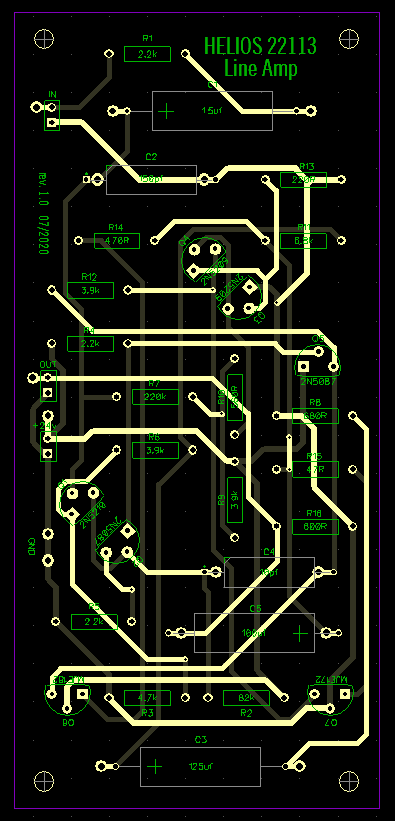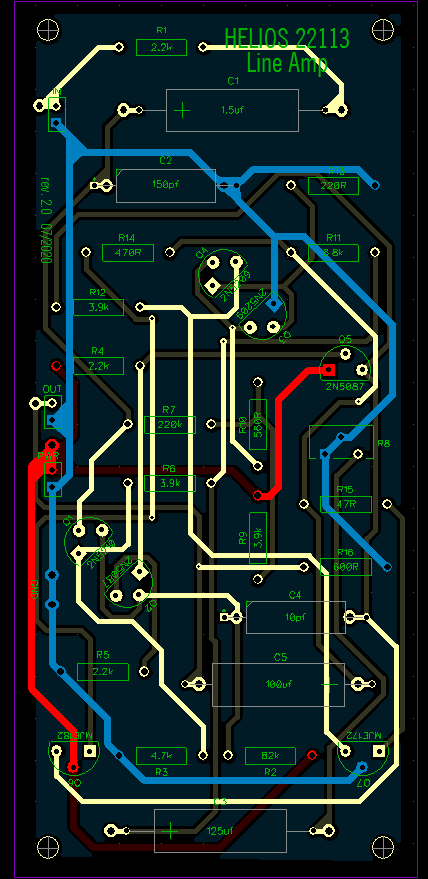I've read through the posts here several times and still don't believe I have the entire picture if I go the helios line amp for makup gain.
Would it be 2128 straight to a 600:600 transformer? (I see this is already a no after more reading elsewhere)
or 2128 to 22113 to 600:600 transformer?
Or just 22113 to 600:600 transformer will provide enough makeup gain?
Also on the 2128 I don't understand what the FB "output" is exactly. Is it just a resistor to ground and the value sets the gain?
Looks to be so, and also could be replaced with a trimmer as well as R8 on the 22113 could be a trimmer to set gain?
As an experiment, I'm attempting to build the RS127 portion of the schematic on turret board/point to point.
Still waiting on the Carnhill inductor and a 10k:10k input transformer in the mail.
I'm thinking of keeping it passive, going balanced in, then straight out to di on a 1073 clone for now, but if I used an external PSU, I could have makeup gain.
I'm housing it in a small 6x4" hammond case similar in size to the original. Resistors are soldered directly onto the switch. Caps and inductors are the only things on the turret board and the carnhill inductor will be mounted to the case with standoffs. Transformer will be rear mounted.
Here's a pic of my progress so far while I'm waiting on parts!











































